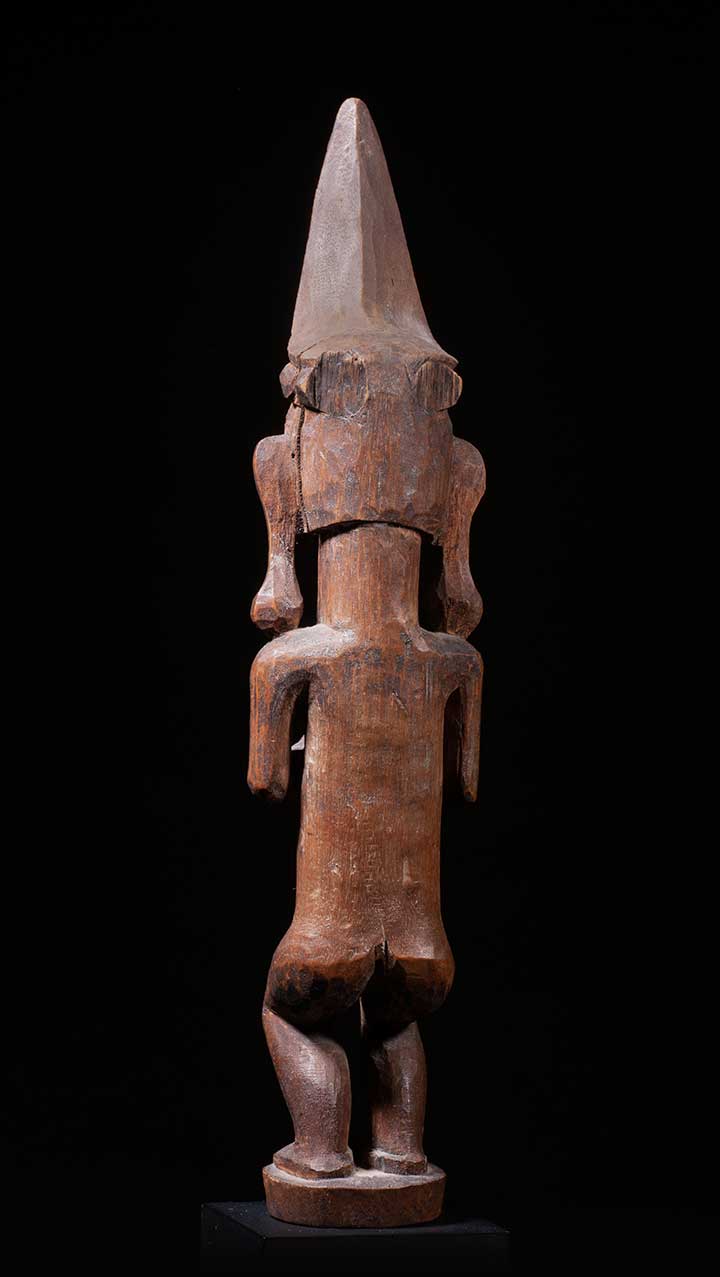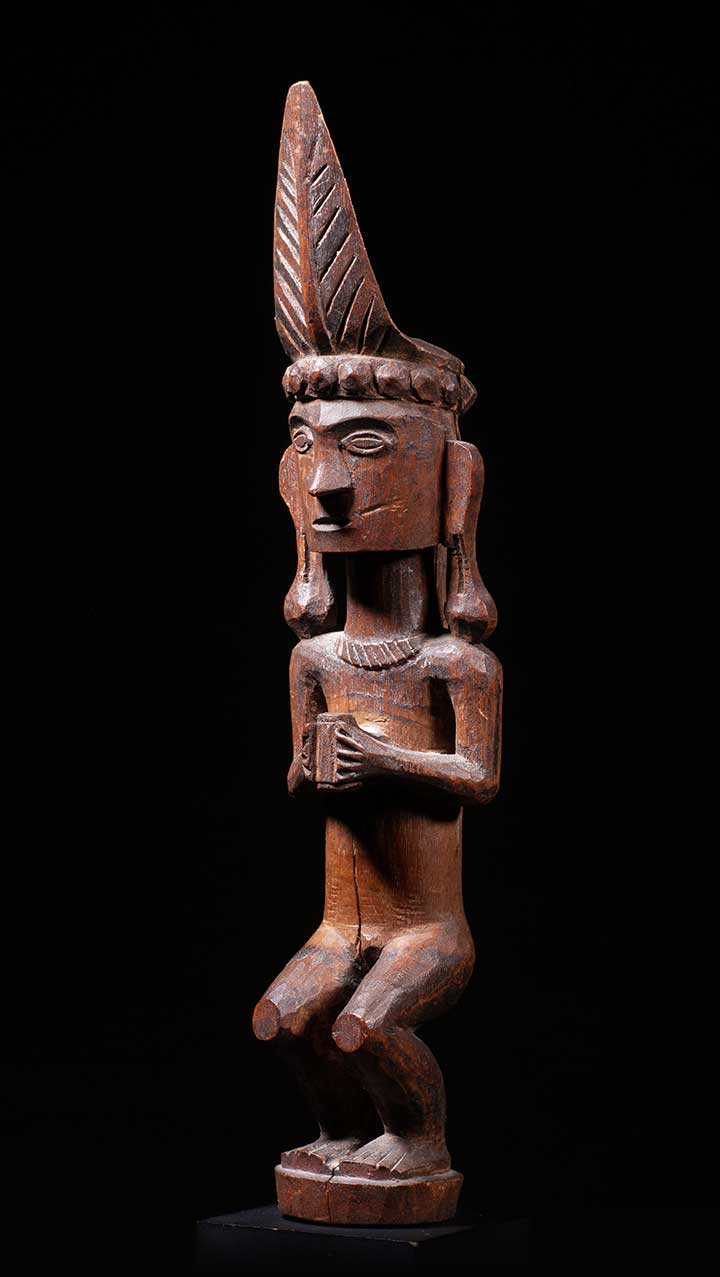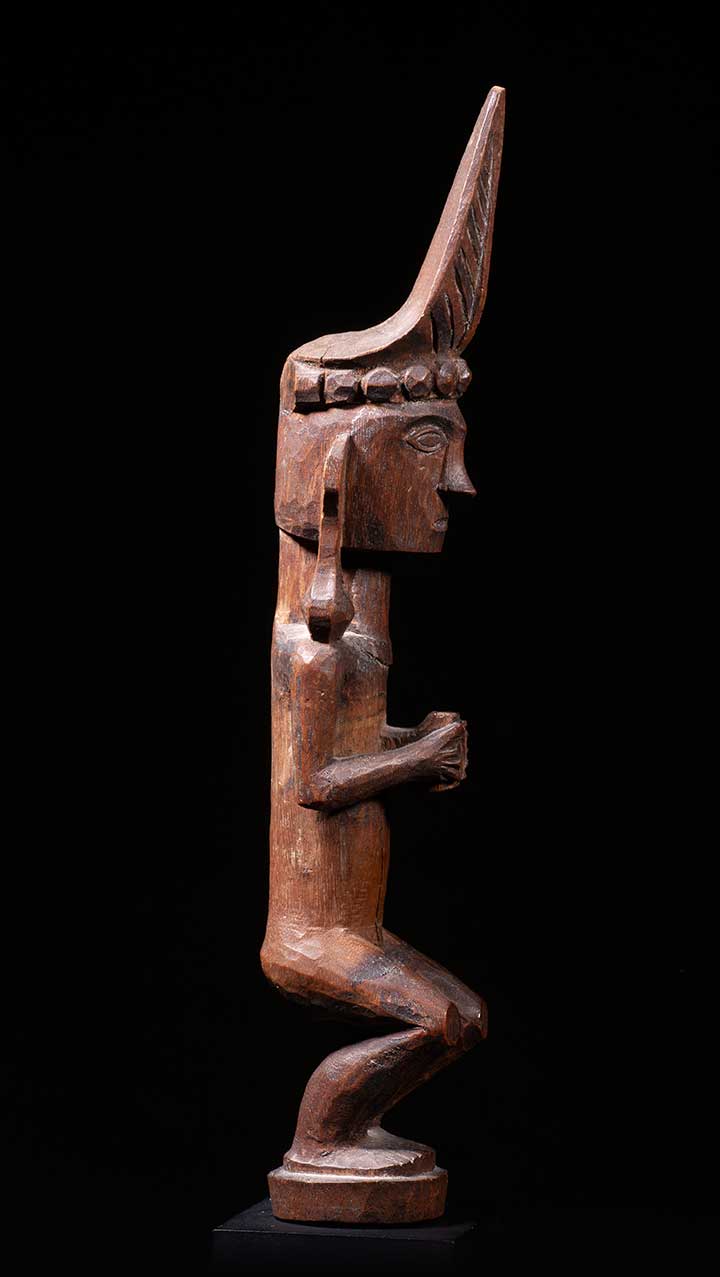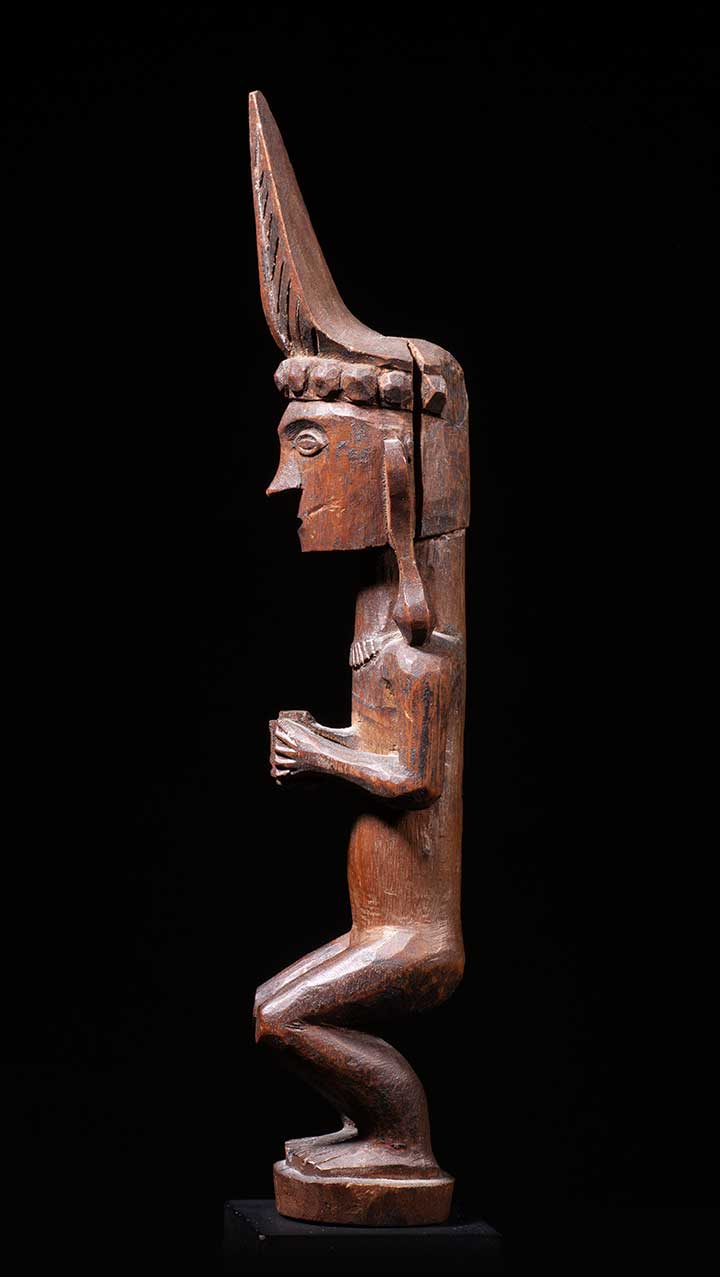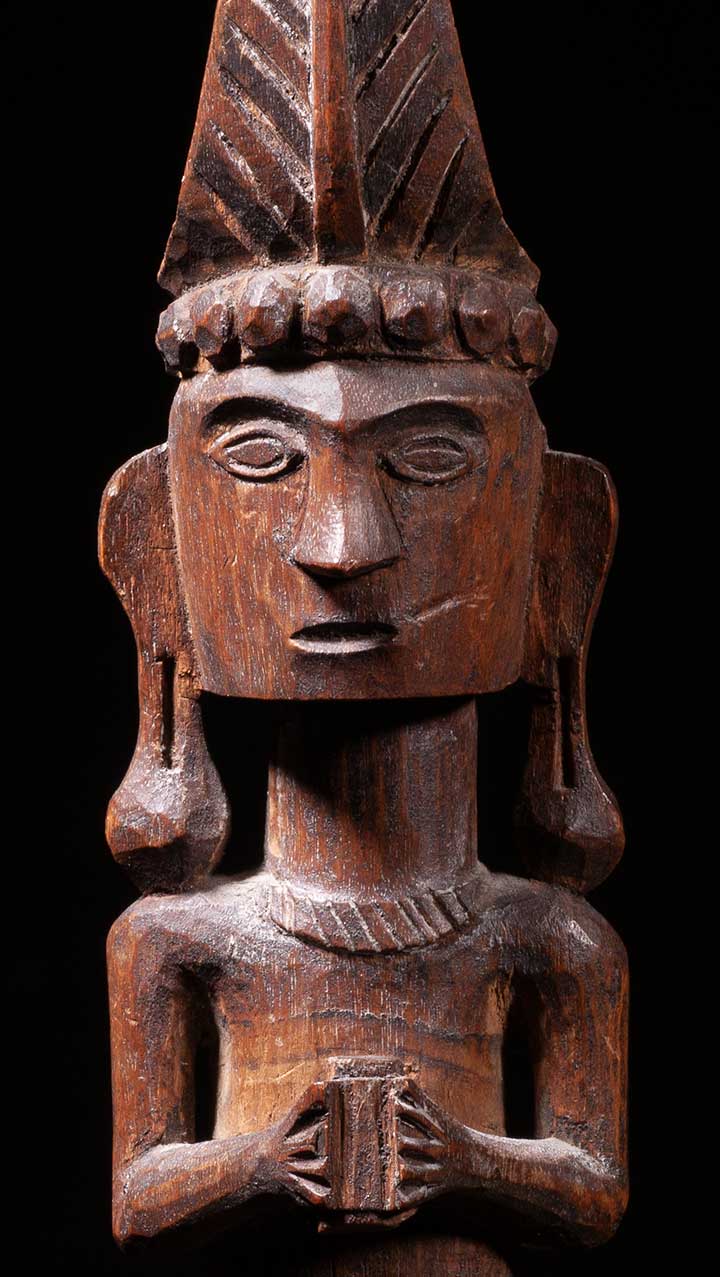Adu zatua, Ancestor Figure
North Nias, Indonesia
19th-early 20th c
Provenance: Seymour Lazar collection, Palm Springs, CA.
These sculptures represent the founding ancestors of important lineages in Nias society. Playing a vital role in daily life, the sculptures would have been present in each noble household, serving as a supernatural protector of the home.
The aesthetic attributes of this figure are equally striking. The standing figure is depicted with bent legs, holding a container between its hands. This container is likely a betel box, which was a common symbol of wealth and status in the region. The extended ear lobes and earrings are also significant cultural markers, as they were often worn by wealthy individuals to signify their social standing. The tall crown on the figure’s head further emphasizes its importance and authority. The adu zatua figure is carved from hard wood and has a dark brown aged patina that adds to its visual appeal. The intricate detailing and expert craftsmanship of the figure demonstrate the skill and talent of the North Nias artisans who created it. The label from the Dutch base maker Robert Cok, who was active in the 1960s, adds to the historical significance of the adu zatua figure. It suggests that the figure was likely acquired during this period.
Adu zatua, Ancestor Figure
North Nias, Indonesia
19th-early 20th c
Provenance: Seymour Lazar collection, Palm Springs, CA.
These sculptures represent the founding ancestors of important lineages in Nias society. Playing a vital role in daily life, the sculptures would have been present in each noble household, serving as a supernatural protector of the home.
The aesthetic attributes of this figure are equally striking. The standing figure is depicted with bent legs, holding a container between its hands. This container is likely a betel box, which was a common symbol of wealth and status in the region. The extended ear lobes and earrings are also significant cultural markers, as they were often worn by wealthy individuals to signify their social standing. The tall crown on the figure’s head further emphasizes its importance and authority. The adu zatua figure is carved from hard wood and has a dark brown aged patina that adds to its visual appeal. The intricate detailing and expert craftsmanship of the figure demonstrate the skill and talent of the North Nias artisans who created it. The label from the Dutch base maker Robert Cok, who was active in the 1960s, adds to the historical significance of the adu zatua figure. It suggests that the figure was likely acquired during this period.




